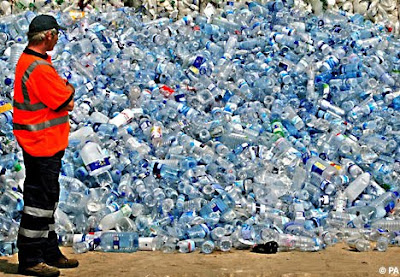You can click on the images to enlarge. The rest of the pictures from Chris Jordan's Nothern Pacific Gyre projects are also available here.





Information and news about the disturbing impact of plastic on the environment.














I would just like to extend an invitation of collaboration. You see, in writing my blog, I do not wish to sabotage or incite you with inflammatory, defamatory comments. I’d hate for this to turn into a virtual shouting match of sorts, instead of a productive discussion for change. I am not trying to undermine the plastic industry or downplay any of its accomplishments and contributions to society. I understand that it is a potentially sustainable material with many uses. However, I do believe it is necessary to convey the truth about how current plastic practices are also hurting our environment. With all due respect, current practices are encouraging plastic overproduction, consumption, waste, and improper disposal. If you were not aware of or doubtful of this, I am confident my blog will convince you otherwise.
I urge you to make an effort to commit to responsible business practices. I acknowledge that profit is the purpose of any industry, but I ask you to recognize the importance of keeping the health and best interests of your customers and the environment in mind. Manufacture enough plastic to meet demand, not exceed it by leaps and bounds. Focus on producing plastic where it is necessary, such as medical supplies. Refrain from pushing products shown to be wasted instead of recycled, like plastic grocery bags and water bottles,
Instead of spending 10 million dollars on a strategic ad campaign trying to make us love plastic, use the money on make a positive difference. Since the plastic you produce is present in so many products and packaging we encounter and consume everyday, make it easier for us to recycle. Eliminate plastic in landfills by providing the public with more opportunities and outlets to recycle. Advertising how dynamic and great plastic is isn’t necessary. There is a urgent need to inform the public about why they need to recycle and how to do it. I’d like to think you want the best for everyone, not just yourself. Prove that you are an industry with ethical standards and prove that plastic can live up to its sustainable, environmentally friendly name. Call me idealistic, but I believe together we can do this.
-Amanda